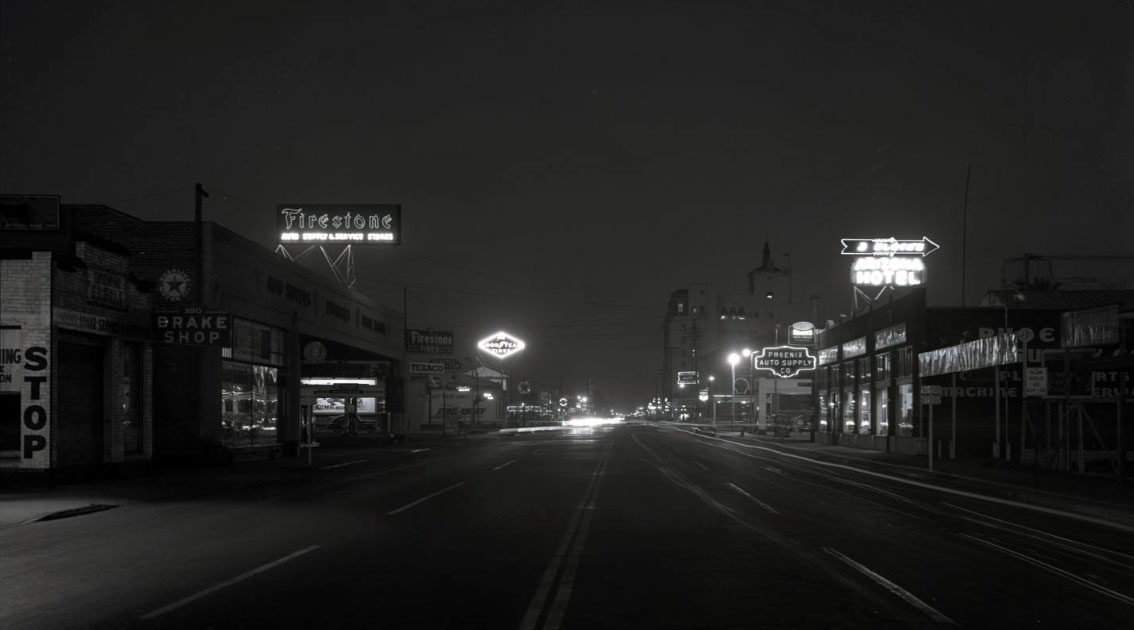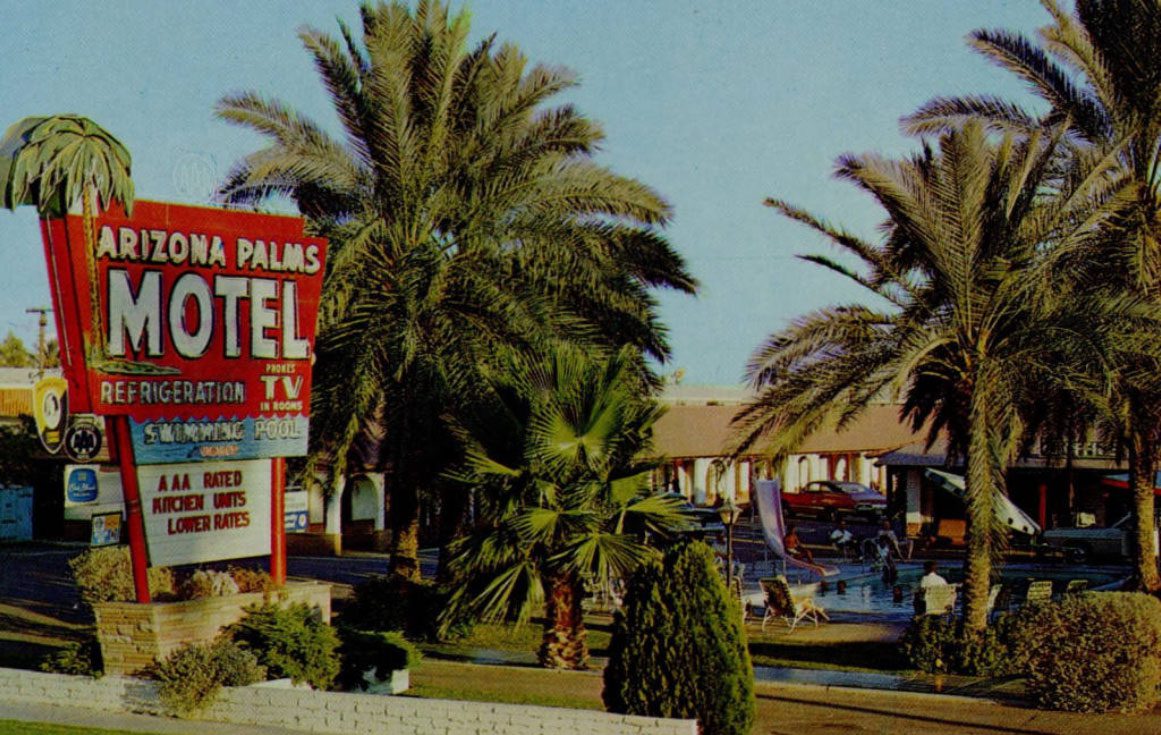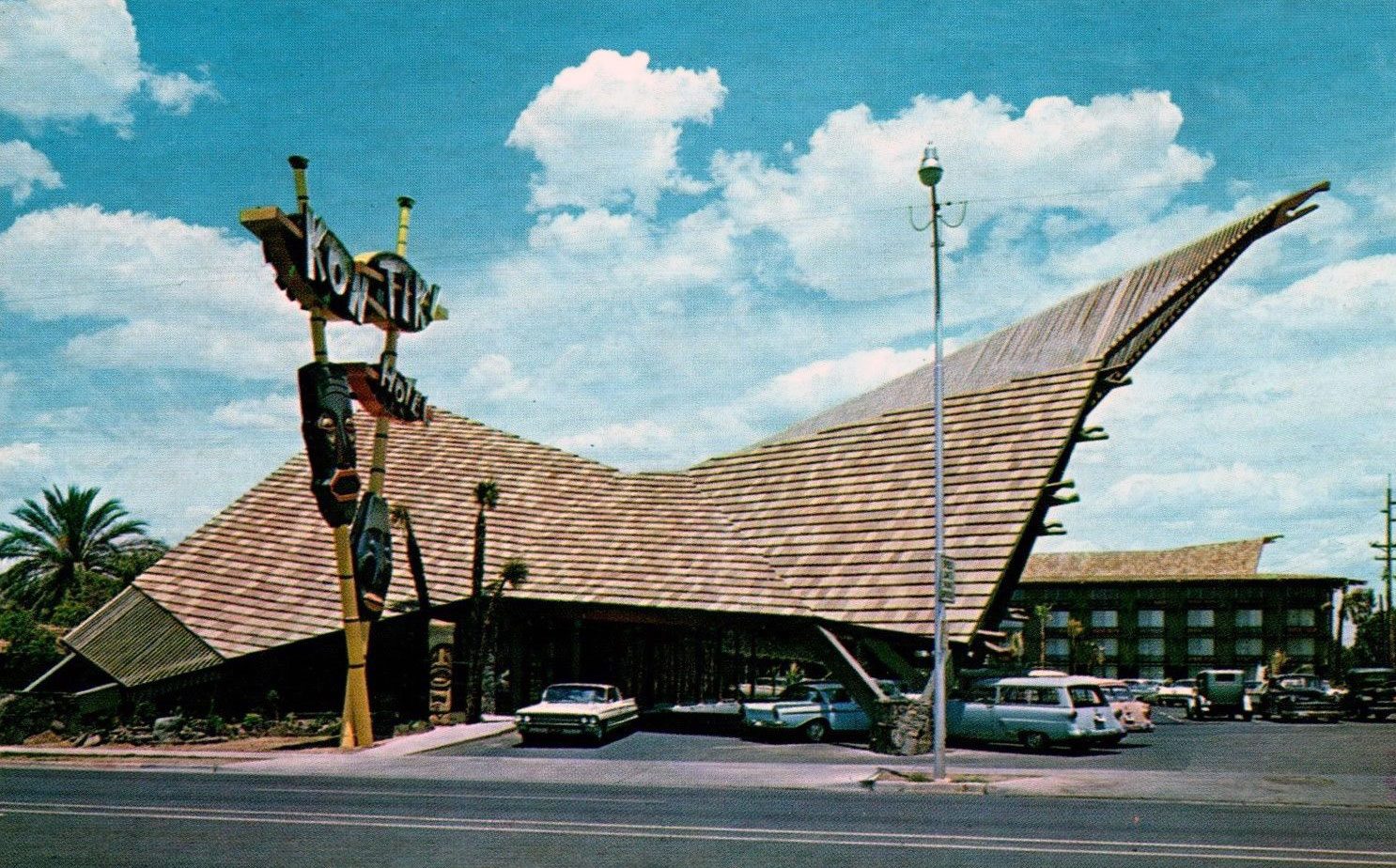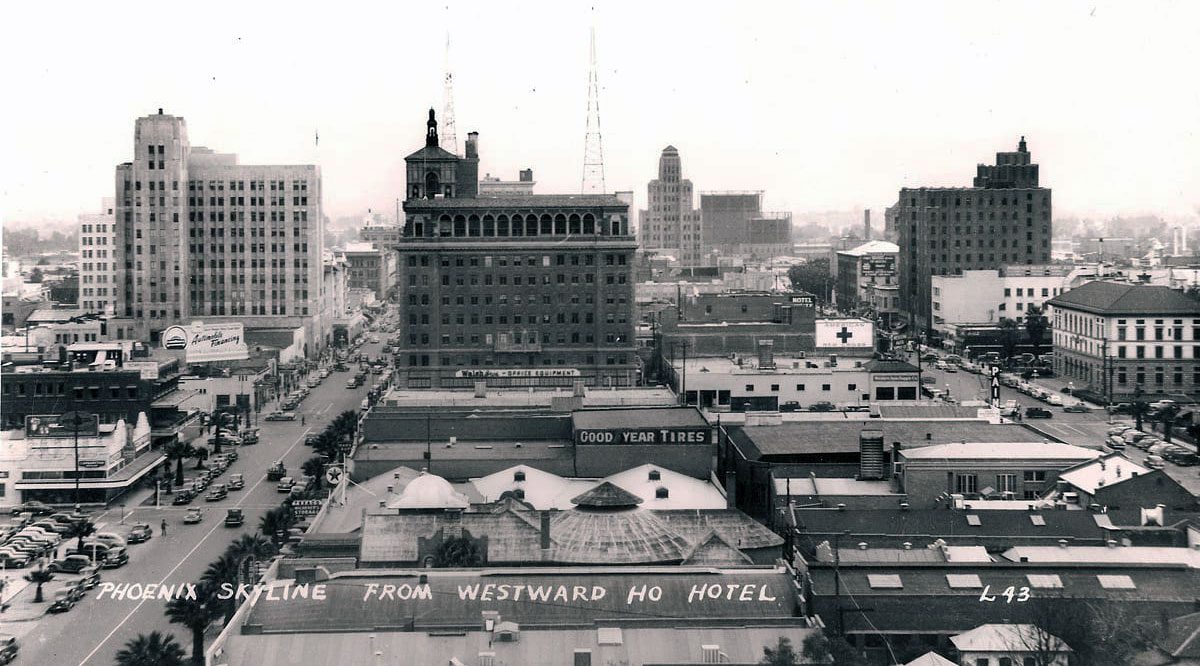
A view of Van Buren Street at night in 1942. This was the view looking east toward the intersection of Third Avenue. (Photo: McCulloch Brothers Inc.)
Phoenix once had the world in its backyard. There were Polynesian villages, royal chateaus, and a Middle Eastern oasis set among the Statue of Liberty, Old Faithful, and the Alamo in a scene reminiscent of Disney’s Magic Kingdom. This assemblage of geographical whimsy — mom-and-pop motels cloaked in exotic motifs — was along Van Buren Street, the city’s main artery and one of the nation’s most dazzling roadside strips.
Van Buren buzzed with excitement created by these mini-resorts that featured fanciful names, make-believe buildings, lush landscaping, and — most importantly — huge neon signs. Like catchy pop tunes, these advertising platforms were simple and infectious.

The Liberty Motel sign in 1991, located at 1911 E. Van Buren Street. (Photo: Douglas C. Towne)
“A neon sign’s overall effect is mesmerizing,” says Carlos Lozano, Vanishing Tucson founder. “Centuries ago, viewing religious figures in stained glass produced the same desired effect.”
But this kitschy wonderland’s most noteworthy light was atop the Security Building located along Van Buren in Downtown Phoenix. Van Buren, named after the eighth U.S. president, Martin Van Buren, formed the northernmost street of the original Phoenix townsite, created in 1870. By 1895, the street was called Tempe Road east of Seventh Street and Yuma Road west of Seventh Avenue. But as auto travel gained popularity, Van Buren’s reach would extend much further.

The Arizona Palms Motel located at 3725 E. Van Buren Street. (Photo: Postcard, 1960s)
Around 1915, Van Buren became part of an informal network of roads called auto trails. These were rough, poorly-marked routes cobbled together from existing roads by private booster organizations. Auto trails routed along Van Buren included the Bankhead Highway and the Old Spanish Trail.
In 1925, the federal government began managing the nation’s highways and designated Van Buren as U.S. 80 and 89, and added U.S. 60 and 70 to the street’s resume a few years later.

The Kon Tiki was located at 2364 E. Van Buren Street. (Photo: Postcard, 1950s)
“Van Buren was the only place in America where four U.S. cross-country highways overlapped each other,” says local historian Donna Reiner. “The street acted like a giant funnel that collected traffic between the Mexican border and Route 66.”
Van Buren’s increasing auto traffic helped influence Dwight B. Heard, Phoenix businessman and publisher of The Arizona Republican (now Republic) newspaper, to construct the eight-story Security Building along the highway at Central Avenue. The ornate building featured a copper dome at its apex that housed a 3,000-candle-power beacon that people saw 30 miles away. The guiding light drew numerous motorists to Downtown Phoenix for gas, food, lodging and entertainment.

Located on the “Funset Strip,” the Security Building featured a copper dome at its apex that housed a 3,000-candle-power beacon that people saw 30 miles away. The guiding light drew numerous motorists to Downtown Phoenix for gas, food, lodging and entertainment. (Photo: McCulloch Brothers Inc.)
The Security Building’s light shone into the 1950s when Van Buren was dubbed Phoenix’s “Funset Strip,” a tamer, casino-less version of the famed Las Vegas Boulevard. Van Buren’s future seemed as bright as its neon glow, but by the 1970s, the street had begun a downward spiral. Many of its motels closed, blinking out like the neon tubes on their malfunctioning signs. Phoenix’s once spectacular motel row vanished as if just a mirage.
The light atop the Security Building also went dark, though it still worked as recently as 1985. Relighting this famed Phoenix beam would be a fitting nod to its impact as a beacon for the city. Its glow would only be symbolic, however, as the modern Phoenix Downtown skyline now overshadows its radiance.
About the author: Douglas Towne’s first overnight visit to Phoenix was spent with his partner-in-crime, Cathy Weiler, at Wards Motel on 3037 E. Van Buren Street in 1985. The idyllic evening was spent observing the strip’s fading neon glory and the challenging street scene became a catalyst for future roadside research. Towne is a freelance writer, hydrologist, historian and artist.






